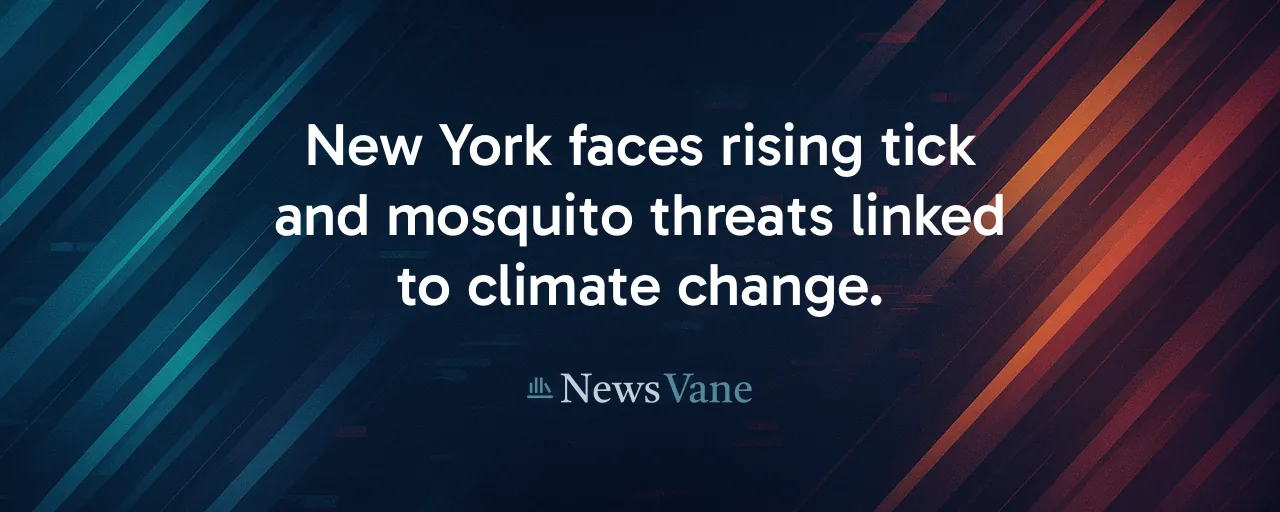A Growing Threat in New York's Outdoors
New York's forests, beaches, and parks draw millions each year, especially during holiday weekends like the Fourth of July. A hidden danger lurks: ticks and mosquitoes. On July 3, 2025, Governor Kathy Hochul warned residents and visitors to guard against these pests, which carry diseases like Lyme and West Nile virus. Rising case numbers signal a pressing public health challenge.
Lyme disease, the most common tick-borne illness, struck over 19,000 New Yorkers in 2023, the highest in recent years. Mosquito-borne West Nile virus and rare cases of Eastern equine encephalitis also persist. Warmer temperatures and changing environments have expanded the habitats of these pests, increasing risks even in areas once considered safe.
This issue extends beyond personal health. It affects tourism, local economies, and healthcare systems. The challenge involves both avoiding bites and balancing outdoor enjoyment with protecting communities from vector-borne diseases.
Understanding the Enemy
Blacklegged ticks, often no bigger than a poppy seed, are the primary carriers of Lyme disease. They transmit bacteria after attaching to a host for 36 hours or more. Other tick-borne illnesses, like babesiosis and the Powassan virus, can infect within minutes. Mosquitoes, active at dawn and dusk, spread West Nile virus and, in rare cases, Eastern equine encephalitis.
Surveillance data paints a stark picture. Ticks are now found in nearly every New York county, with babesiosis and anaplasmosis spreading westward. West Nile cases, averaging 55 annually from 2020 to 2023, fluctuate with rainfall. These trends highlight the importance of vigilance, as a single bite can lead to serious illness.
Environmental factors play a role. Warmer winters and wetter springs create ideal conditions for ticks and mosquitoes. Human activity, like hiking or gardening, also increases exposure. Recognizing these patterns is the first step toward effective prevention.
Practical Steps for Protection
Preventing bites starts with simple actions. Wearing long sleeves, light-colored clothing, and closed-toe shoes makes ticks easier to spot. Tucking pants into socks and tying back hair reduces exposure. EPA-registered repellents, like those with DEET or picaridin, offer additional defense when applied correctly.
Daily tick checks are important, especially after outdoor activities. Showering soon after coming indoors and drying clothes on high heat can kill lingering ticks. For mosquitoes, covering strollers with netting and avoiding peak biting hours add layers of safety. Pet owners should inspect animals and consult veterinarians about tick prevention.
Permethrin-treated clothing, which repels both ticks and mosquitoes, is gaining traction. Unlike repellents, it lasts through multiple washes. These measures empower individuals to enjoy New York's outdoors while minimizing risks.
The Role of Research and Surveillance
New York's Department of Health collects tens of thousands of ticks annually, analyzing them to track disease trends. Public dashboards map areas with high-risk ticks, helping residents make informed choices. University researchers study vector behavior, while medical providers refine diagnostic tools to catch infections early.
Since the 1970s, when Lyme disease was first identified, New York has built a robust surveillance system. West Nile virus, detected in 1999, prompted citywide mosquito control programs. These efforts provide data to guide policy, from park signage to physician training, ensuring timely treatment for those affected.
Balancing Nature and Safety
Vector control is a shared responsibility. Local governments manage mosquito breeding sites through larviciding and habitat modification, while homeowners can eliminate standing water. Integrated pest management, which combines these tactics with minimal pesticide use, offers a sustainable path forward.
Clear guidance on tick removal, using fine-tipped tweezers, not detergents or matches, reduces infection risks. Bipartisan support for vaccine research and transparent data sharing reflects a unified goal: protecting communities without stifling outdoor recreation.
Looking Ahead
New York's battle against ticks and mosquitoes is far from over. Rising case numbers and shifting habitats require ongoing vigilance. Personal actions, like wearing repellents and checking for ticks, remain the first line of defense. Public health systems need to adapt to emerging threats.
Collaboration is key. Researchers, policymakers, and residents all have roles to play. Investments in surveillance, education, and innovative tools, like new repellents or vaccines, can ease the burden on healthcare systems and local economies.
As New Yorkers head outdoors, they carry both the freedom to explore and the responsibility to protect themselves. By blending individual effort with collective action, the state can preserve its natural beauty while keeping its people safe.
